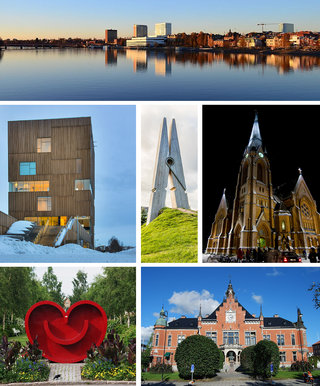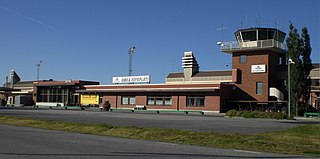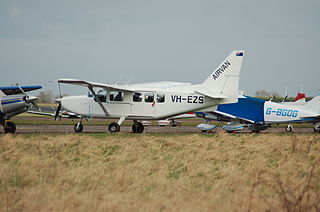Ume is a Japanese name for Prunus mume, a species of Asian plum in the family Rosaceae.
Contents
Ume may also refer to:
Ume is a Japanese name for Prunus mume, a species of Asian plum in the family Rosaceae.
Ume may also refer to:
ONO, Ono or Ōno may refer to:
Uma, or Parvati, is a Hindu goddess.

The Bothnia Line is a high-speed railway line in northern Sweden. The 190 km (118 mi) long route, from Höga Kusten Airport, where it connects to the Ådalen Line, via Örnsköldsvik to Umeå, was opened in 2010 and trains are allowed to travel at speeds up to 250 km/h (155 mph).

Umeå is a city in northeast Sweden. It is the seat of Umeå Municipality and the capital of Västerbotten County.

Ume Sámi is a Sámi language spoken in Sweden and formerly in Norway. It is a moribund language with an estimated 100 speakers. It was spoken mainly along the Ume River in the south of present-day Arjeplog, in Sorsele and in Arvidsjaur.
This page lists Japan-related articles with romanized titles beginning with the letters U and V. For names of people, please list by surname. Please also ignore particles when listing articles.

Umeå Airport is an airport located on the southern outskirts of the city of Umeå, Sweden. As of 2019, it is the seventh-largest airport in Sweden. It had 960,351 passengers in 2019.

The Institute for Language and Folklore, is a Swedish government agency with the purpose of studying and collecting materials concerning dialects, folklore and onomastics.

Sámi languages, in English also rendered as Sami and Saami, are a group of Uralic languages spoken by the Sámi people in Northern Europe. There are, depending on the nature and terms of division, ten or more Sami languages. Several spellings have been used for the Sámi languages, including Sámi, Sami, Saami, Saame, Sámic, Samic and Saamic, as well as the exonyms Lappish and Lappic. The last two, along with the term Lapp, are now often considered pejorative.
Norrland dialects is one of the six major dialect groupings of the Swedish language. It comprises most dialects traditionally spoken in Norrland, except for those of Gästrikland and southern Hälsingland, which are usually classified as Svealand Swedish, as well as those of Härjedalen and northernmost Jämtland, which are usually classified as Norwegian.

Kyrkbron is a bridge in Umeå that takes Östra Kyrkogatan over Ume River to Teg on the south side. The construction of Kyrkbron started in 1973 and it was opened on 26 September 1975 becoming Umeå's third bridge over the Ume river. A discussion about whether or not the bridge should be located next to the church lasted from the early 1960s and continued into the 1970s. During the construction an unknown burial ground was encountered, leading to archaeological excavations.

Arboretum Norr is an arboretum in Baggböle, Sweden, on the Ume River, about eight kilometers west of Umeå city centre.
Umeå Energi is an energy company based in the town of Umeå in Sweden. It is responsible for the supply of electricity, along with providing district cooling, district heating as well as broadband services through a subsidiary by the name of UmeNet.

Baggböle is a small village on the Ume River in northern Sweden, approximately 8 km (5 mi) upstream of the city of Umeå. The village was a base for sawing local timber in the nineteenth century, with a sawmill powered by the water of the river rapids close to the village. The sawmill at Baggböle was abandoned towards the end of the 19th century, but was in its heyday the largest water-powered sawmill in Sweden. The operations at the sawmill resulted in a new word in Swedish, baggböleri, a term that originally meant illegal felling of timber in forests belonging to the Crown, but is now a pejorative term for 'reckless deforestation'. Today Baggböle is known for Arboretum Norr, an arboretum that has been developed to attract visitors, and develop plants suitable for northern latitudes.

Klabböle Power Plant was a hydroelectric plant located near Umeå in northern Sweden. The plant was commissioned in 1899 and supplied power to the city until 1958, when it was replaced by a newly constructed state-owned power plant in Norrforsen. Klabböle Kraftverk is now a museum located at Ume River's south bank, below the village of Klabböle, about 7 kilometres (4.3 mi) upstream from Umeå.

Baggböle Manor is a manor house, located on the Ume River in Baggböle, about 10 kilometres (6.2 mi) northwest of the city of Umeå in northern Sweden. It was completed in 1846 as the residence for the manager of Baggböle Sawmill.

The forest Sami are Sami people who live in the woods and who, unlike the reindeer-herding Sami people, do not move up into the fells during the summer season. Historically, there have been forest Sami in Sweden in the area ranging from northern Ångermanland to the far north. In the early 1600s the term granlapp was also used to refer to the Sami people who paid taxes only to Sweden, compared to the semi-nomadic fell Sami, who, since they worked in the fells that straddled the Swedish-Norwegian border, had to pay taxes to both countries. When Ernst Manker studied the life of the forest Sami in the early 20th century, nearly all of their habitations had been abandoned. Only one forest Sami village remained, in Malå in Västerbotten, an area known as Stenundslandet in Anundsjö.

On 14 July 2019, a Gippsland GA8 Airvan crashed on a river islet in Sweden, killing all nine people on board. Structural failure of a wing is suspected as the cause of the accident. Consequently, the Gippsland GA8 Airvan was grounded by the Civil Aviation Safety Authority (CASA) in Australia, the Civil Aviation Authority (CAANZ) in New Zealand and the European Aviation Safety Agency (EASA) in the European Union. The grounding order was issued on 20 July and was due to run until 3 August, but was lifted early as CASA found there was no evidence for an unsafe condition, and the EASA said the wrecked aircraft had been exposed to aerodynamic loads beyond the limits specified in the type-certification basis.

Elina Maria Katarina Barruk is a Swedish Sámi singer, songwriter and pianist, who sings in the Ume Sámi language, now spoken by less than a dozen native speakers. She believes her songs will help to revitalize the language. In September 2015, she released her first album, Báruos, and continues to perform in concerts inspired by traditional yoik music from the province of Västerbotten.
Lars Henrik Andreas Barruk is a Sámi language consultant and teacher known for his work documenting and revitalizing the Ume Sámi language.